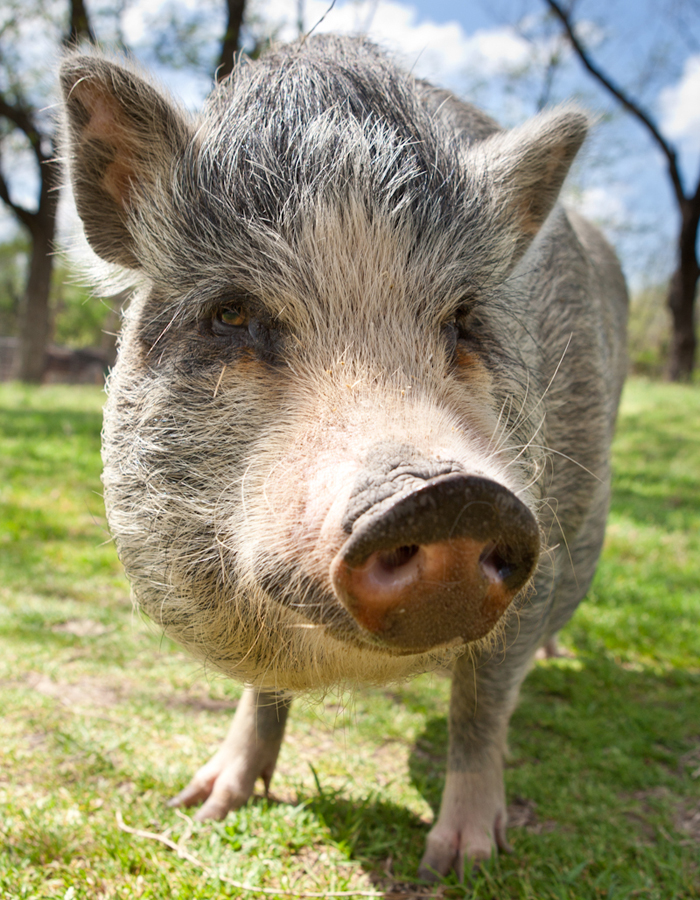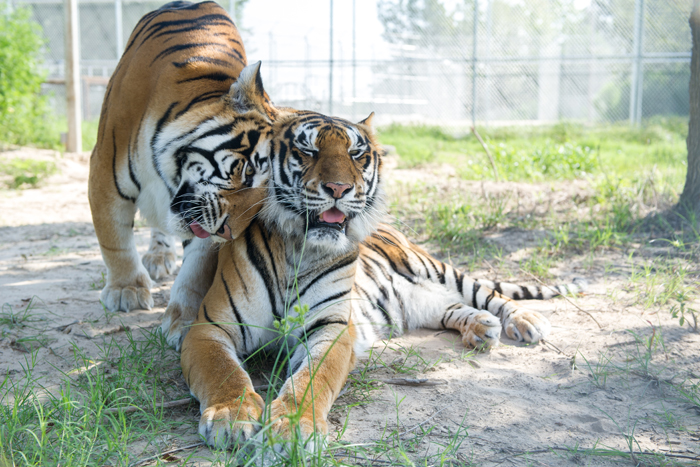
Why We Need Animal Sanctuaries (Op-Ed)

Ben Callison, director of Cleveland Amory Black Beauty Ranch, contributed this article to Live Science's Expert Voices: Op-Ed & Insights.
In an ideal world, my job would not exist. As the director of Cleveland Amory Black Beauty Ranch, one of the largest and most diverse animal sanctuaries in the United States, I long for the day when animal sanctuaries are no longer needed.
Unfortunately, they are needed now more than ever. We continue to get the calls every day: A family needs to find a home for their "pet" monkey that has become aggressive; endangered antelope bred for captive hunts will be killed by the highest bidder; chimpanzees from laboratories need placement, since they have failed as reliable test subjects for human disease; horses and donkeys are destined for slaughter; tigers living in a roadside zoo's deplorable conditions need immediate rescue and shelter. These stories are a mere glimpse of what is asked of just one sanctuary in a given week. [Abandoned, Even Wild Animals Can Find Sanctuary (Gallery)]
Why sanctuary
Many animal sanctuaries, like our Black Beauty Ranch in eastern Texas or Duchess Sanctuary in southwestern Oregon, exist to provide formerly neglected animals a safe haven where they can live the remainder of their lives in peace and safety.
Wildlife rescued from circuses, roadside zoos and backyards reside in sanctuaries. Outside of managed Species Survival Plans — programs for managing specific, and typically threatened or endangered, species populations within accredited zoos and aquariums, and their partners — all captive-bred wild animals, including big cats and primates, are unable to be responsibly returned to the wild. The reasons for this are both biological — irresponsible breeding practices have compromised the animals' "wild" genetic code — and psychological, as the animals have become dependent on humans for survival. [Boas, Chimps or Tigers: Wild Animals Are Not Pets (Op-Ed )]
Even domesticated animals, such as donkeys, horses and other farm animals, end up in abusive and dangerous situations. While these domestic animals pose less of a public safety threat than wild animals do, they often require special attention due to ongoing medical or behavioral conditions.
Sign up for the Live Science daily newsletter now
Get the world’s most fascinating discoveries delivered straight to your inbox.

Where animals get a second chance
Each year, thousands of animals come to The Humane Society of the United States in desperate need of healing and care. The HSUS and its five affiliated animal care centers, four of which are operated by The Fund for Animals, provide rescue and rehabilitative care for all types of animals. With highly skilled staff and volunteers, each center provides a second chance at life for all animals that enter.
Our sanctuaries, like many others, are accredited by the Global Federation of Animal Sanctuaries (GFAS), meaning we meet or exceed the highest level of objective and peer-reviewed standards of care and governance set for sanctuaries. There are many pseudo-sanctuaries and commercial operations that call themselves "rescues," but many of them overbreed animals, truck them around to shopping malls for photo ops and engage in other reckless practices. GFAS helps to lift the entire field of animal sanctuaries, and helps donors and the general public distinguish legitimate sanctuaries from substandard ones.
With the exception of some horses that are given to new homes, every animal that enters our sanctuaries will remain there for life, and each will receive specialized enrichment and care for the most natural existence possible in a sanctuary setting. Our mission is embodied by the final words of Anna Sewell's "Black Beauty:" "I have nothing to fear, and here my story ends. My troubles are all over, and I am at home" — a quote that is proudly engraved on our gate entering the sanctuary.

Preserving sanctuary land
Along with operating animal care centers throughout the United States, The HSUS has helped create more than 100 permanent wildlife sanctuaries around the world and has protected millions of acres of wildlife habitat through The Humane Society Wildlife Land Trust (HSWLT). The Trust was established in 1993 to protect the homes of all species, not just those that are already endangered, threatened or rare.
The HSWLT allows landowners to conserve their property and prohibit hunting and trapping, all while protecting wildlife naturally living within the sanctuary. Undeveloped land is becoming increasingly scarce as urban sprawl stretches across the United States, leaving wildlife with limited space to remain untouched by the masses. These wildlife sanctuaries provide animals and humans with open space to enjoy, and visitors can learn about the environment and conservation.
As long as humans continue to mishandle and exploit the animals of our planet, sanctuaries will be needed. It is essential that we educate those around us about the importance of the animals with whom we co-exist.
The most effective way to help sanctuaries is to become an advocate for the animals sanctuaries can't reach — those in the exotic wildlife trade, those languishing in laboratories and those facing unspeakable cruelty and neglect. Thousands of animals rely on the protection sanctuaries provide worldwide, and thousands more await rescue and sanctuary of their own.
To get involved with animal welfare legislation in your state, visit humanesociety.org/action. To support the critical work of sanctuaries, consider adopting one of our rescued animals through The Fund for Animals.
Follow all of the Expert Voices issues and debates — and become part of the discussion — on Facebook, Twitter and Google+. The views expressed are those of the author and do not necessarily reflect the views of the publisher. This version of the article was originally published on Live Science.









